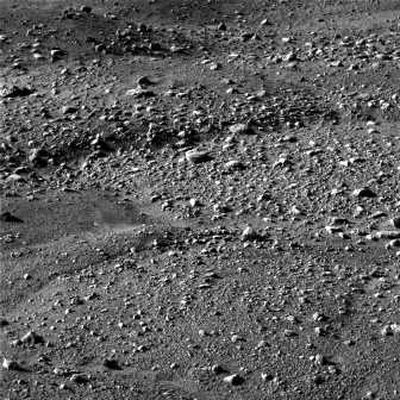Scientists scrutinize surface of Mars

Ground operations began Monday at the Phoenix landing site at Mars’ north pole, with the latest images from the robotic lander showing a bizarre, checkerboard-type landscape apparently carved by the movement of ice lying only inches beneath the surface.
Employing a “follow the water” philosophy, scientists have sent Phoenix to the pole to search for organic molecules that could indicate Mars’ potential as a home for some forms of life.
The first images beamed back to Earth show a complex of polygonal-shaped features bordered by narrow troughs. At first glance, they don’t appear particularly gripping. Some observers have compared the scene to a lumpy parking lot.
“The pictures may look a little bleak, but the science can be fascinating,” said Peter Smith, the principal scientist from the University of Arizona. “This is just like the active surface you see in the arctic.”
On Earth, such features are formed by the thawing and refreezing of water, which causes the surface to expand and contract, something like a sheet of brownies pulled from the oven at the wrong time.
This is significant, because if the ice on Mars does thaw, it could provide a liquid medium for life. Not the kind of higher life forms that walk around and leave recognizable signs – one picture returned by Phoenix that has amused the scientists contains an as-yet unexplained artifact some have compared to a “for sale” sign – but rudimentary forms such as bacteria.
On Earth, the polar regions are good record keepers of past climate change, and the scientists hope the same holds true on Mars.
The science team Monday began testing Phoenix’s 7.7-foot-long robotic arm that will begin digging into the soil in the next few days.
The $420 million mission is expected to last 90 days, or, in the words of Barry Goldstein, the Phoenix project manager at the Jet Propulsion Laboratory in La Canada-Flintridge, Calif., “until Mars freezes over.”
Phoenix landed in spring on Mars, but in the winter the lander will be enveloped by a thick coating of carbon dioxide ice, which probably will kill its electronics and prevent its solar panels from gathering even the minimal amount of sunlight available.
JPL also released what it deemed a “spectacular image” of Phoenix descending through the Martian atmosphere, dangling on the end of its parachute. The picture was taken by the high-resolution camera on the Mars Reconnaissance Orbiter, one of three spacecraft circling the planet.
It was the first time one spacecraft was able to photograph another during a landing on an alien planet, a feat some Phoenix team members doubted could be achieved.
It was just one accomplishment for a mission that, so far, has been marked by one glittering achievement after another, starting with a picture-perfect landing on Sunday.